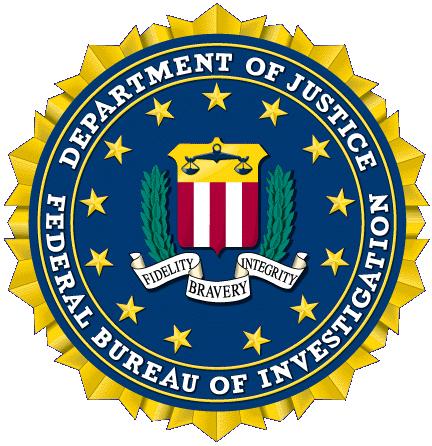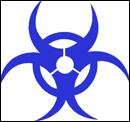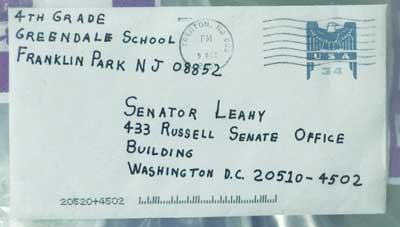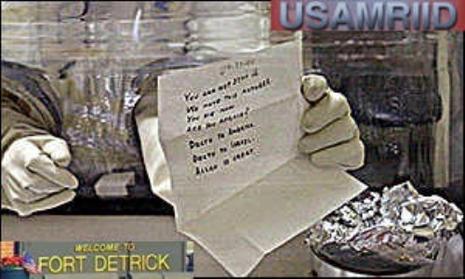 Enquête résolue. Bruce Ivins, savant fou, est à l'origine des lettres d'anthrax. Lorsque le FBI a claironné la résolution de l'affaire, les médias ont été rapides à répandre la nouvelle.
Enquête résolue. Bruce Ivins, savant fou, est à l'origine des lettres d'anthrax. Lorsque le FBI a claironné la résolution de l'affaire, les médias ont été rapides à répandre la nouvelle.Seulement, très vite, les affirmations du FBI se sont révélées très légères. Les Fédéraux ont affirmé qu'Ivins était le seul coupable. Mais la graphologie ne reconnaît pas son écriture sur les lettres ! Plus étrange encore, des psychologues du FBI avaient conclu en 2001 que le contenu des lettres était le fait d'un "étranger parlant anglais", un profil qui ne correspond pas du tout à celui d'Ivins.
L'homme était paranoïaque, certes, mais n'aurait jamais pu cultiver seul de l'anthrax de cette pureté, selon ses collègues microbiologistes. Les enquêteurs américains ont écarté ces objections sans explications.
Devant la presse, le FBI est incapable d'expliquer pourquoi le scientifique aurait roulé neuf heures pour poster ses lettres à Trenton, New Jersey ni de localiser sa venue effective dans la ville. Visiblement embarassé, un porte-parole des Fédéraux a expliqué que Bruce Ivins était fasciné par les congrégations féminines de l'Université de Princeton, proche de la ville d'où les lettres ont été envoyées. Quel rapport, se sont interrogés les journalistes ? Aucun, à l'évidence.
Aujourd'hui, le gouvernement américain est heureux de ne pas avoir à défendre un dossier aussi abracadabrantesque devant une cour.

Choqué, un reporter de la radio américaine NPR note "les doutes grandissant" émis par les spécialistes à l'égard des conclusions du FBI. Plus loin, un éditorialiste du Guardian écrit que "l'enquête des lettres d'anthrax n'est pas du tout résolue, contrairement à ce qu'affirme le FBI".
Le blog drzz vous avait annoncé, dès ce printemps, que l'affaire des lettres d'anthrax ne sera jamais résolue. Parce que le vrai responsable des lettres, le pays ayant atteint une maîtrise inégalée de la culture d'anthrax, l'Irak de Saddam Hussein, est un coupable qui dérange trop pour être confondu. Mieux vaut, pense le FBI, sacrifier un pigeon comme Ivins que dire la vérité au peuple américain.
Pour les citoyens du monde intéressés par cette affaire, je publie ci-dessous, en version originale, une étude parue dans une revue hautement spécialisée (peer-reviewed) de contre-espionnage. Les conclusions sont très différentes :
---------------------------------------------------
Technical Intelligence in Retrospect: The 2001 Anthrax Letters Powder
Authors: Dany Shoham; Stuart M. Jacobsen
Published in: International Journal of Intelligence and CounterIntelligence, Volume 20, Issue 1 March 2007 , pages 79 - 105
(Weblink : http://newsdetails.blogspot.com/2007/05/technical-intelligence-in-retrospect.html )
(...)
 Naturally, the U.S. Intelligence Community first tried to profile the SSP by technically comparing it with past weaponized anthrax powders made by the U.S. Army. But, while the dehydration-based forming of dry powder, weapon-grade, biological material conducted by William Patrick in the U.S. Army during the 1950s relied on freeze drying, and then grinding down the freeze-dried pellets with a high-speed colloid mill, the AS was probably processed by using a spray drying technology, and it certainly did not employ milling. Protected by five patents, the technical course leading to weapon-grade powders applied by the U.S. Army during the 1950s and 1960s presumably involved freeze drying, sifting, milling, and removal of impurities. But the U.S. program did not use silica in any of the anthrax powders it made during those two decades.
Naturally, the U.S. Intelligence Community first tried to profile the SSP by technically comparing it with past weaponized anthrax powders made by the U.S. Army. But, while the dehydration-based forming of dry powder, weapon-grade, biological material conducted by William Patrick in the U.S. Army during the 1950s relied on freeze drying, and then grinding down the freeze-dried pellets with a high-speed colloid mill, the AS was probably processed by using a spray drying technology, and it certainly did not employ milling. Protected by five patents, the technical course leading to weapon-grade powders applied by the U.S. Army during the 1950s and 1960s presumably involved freeze drying, sifting, milling, and removal of impurities. But the U.S. program did not use silica in any of the anthrax powders it made during those two decades.Since the abandonment of its offensive biological warfare program, the U.S. Army has experimented with various brands of silica nanoparticles added to germ-warfare powders or surrogates produced in small quantities. These include WR-50 and WR-51 (manufactured by Philadelphia Quartz Co.), Cab-O-Sil (Cabot Corp.), and Sipernat D 13 (Degussa AG). Various aerosols of anthrax spores - including Ames - were applied by the U.S. Army for experimental infection studies after the U.S. biological weapons arsenal had been eliminated. Even if some of those BA aerosols included spray-dried spore powders, involving silica, their fineness did not at all equal the SSP. Therefore, the need for technical intelligence pertaining to the SSP became vital.
(...)
The SSP's peculiarity and the resultant challenge to intelligence certainly reflect the need to depend upon a sophisticated combination of different disciplines: technological, strategic, and political. The mailed envelopes containing the SSP were delivered in September and October 2001. The AS was apparently cultured, at most, two years earlier, according to radiocarbon dating made at Lawrence Livermore National Institute.45 The margin of error for this estimate was not given by Livermore, but is expected to be large with such a young sample since the relative concentration of Carbon14 is not much different than the atmospheric ambient.
As mentioned, by the year 2000, apparently around the time of preparing the SSP, the Ames strain was being held, concomitantly, by an unknown number of laboratories in the U.S. (at least seven labs) and abroad (at least five). Chromosomal DNA was identical in sequences to the AS in all Ames isolates tested in 2002, whereas the notable variation detected within collateral DNA (plasmids) was not instrumental for tracing the actual origin of the AS.46 All representative isolates (totaling 42) from the SSP were determined to be of a BA genome indistinguishable from the Ames strain used in laboratories. Further, the use of high-resolution molecular subtyping determined that all AS isolates were indistinguishable by the methods used and probably originated from a single source.47 It thus turns out that the origination of the SSP can scarcely be traced by microbiological methods alone. Though bioassays relying on stable isotope ratios have been suggested, it is presently doubtful that these are practical, specifically in regards to the SSP.48

As a technical intelligence tool, then, the best clues to the provenance of the SSP are the details of the artificial spore coatings. These coatings require a team of specialists to develop. And this is a multidisciplinary effort involving microbiology, chemical engineering, materials science, aerosol physics, possibly live testing, and finally quality assurance. A highly disciplined design of experiments is required, followed by several iterations of parameter adjustment before a high quality powder like the SSP can be developed. In other words, to create a "one off" powder such as the SSP with a siloxane binder that had never been used before in such an application and achieve success on the first attempt would be impossible. A trail of evidence in some state-sponsored bioweapons laboratory somewhere in the world where all of this development work took place must exist. Russia is known to have pioneered the use of the combined silica/binder approach to dry powder BWs. The SSP producer certainly exploited this or some advanced version of this technology.
(...)
Four distinct elements are involved - though possibly taking place unconnectedly with each other, in reality - in the course leading to the anthrax letter attack: the AS supplier; the basic powder technology supplier; the origination of the subsequent powdery bacillus modeling; and the SSP producer. The first three might be completely innocent, according to the following clustering. Namely, the AS supplier (to either Basson, el-Hibri, or another "legitimate" intermediary) was a U.S./British laboratory; the basic powder technology supplier was Denmark's Niro; the origination of the powdery bacillus modeling was USSR/Russia, which preferred BT rather than BG, because the former is a much better simulant for BA spore powder; and the SSP producer - the fourth and cardinal element - was plausibly Iraq, thanks to having obtained and employed the first three elements together, thereby forming a superb integral in Iraq. Alternatively, Soviet or formerly Soviet institutions could constitute the first three elements altogether (or two of them), and al-Qaeda itself could be the intermediary (and the perpetrator, but not the SSP producer). Notably, and in spite of continuing claims that no solid connections - including the contexts of CBW at-large, as well as the 2001 Twin Towers attack - existed between al-Qaeda and Iraq, the opposite has increasingly and firmly been emerging since the 2003 invasion of Iraq.52

(...)
"Relying, apparently, on concrete findings, former top U.S. weapons inspector Dr. David Kay said that "the Iraqis had developed new techniques for drying anthrax - techniques that were superior to anything the United States or the old Soviet Union had. That would make the former regime of Saddam Hussein the most sophisticated manufacturer of anthrax in the world." 58 Somewhat disturbingly, Dr. Kay did not - probably intentionally - give more details about his statement, not mentioning any additive applied for the Iraqi techniques, such as silica or, possibly, siloxane binder, or any foreign contributors - Russian, Danish, or another. Yet, even independently of Kay's remarkable statement, the vitality of such an exceptional Iraqi capability may presumably lie within an effective Iraqi-made integration of the various predominant essentials presented and discussed. And beyond anthrax, a notable collateral outcome of that integration was that silica gel was indeed being used by Iraq to aid in the dispersability of wheat smut spores, an anti-cultivar fungal biological warfare agent then held by Iraq.
Comparatively, the FBI's domestically originated-SSP hypothesis turned out to be futile. Slowly and steadily, it is perishing.59 Particularly, that the view that the old U.S. Army anthrax stockpile was not silica-based, while the fineness of various aerosols of anthrax spores - including Ames - applied by the U.S. Army for experimental infection studies after the U.S. biological weapons arsenal had been eliminated - even if including spray-dried spore powders containing silica - did not at all equal the quality of the SSP."
